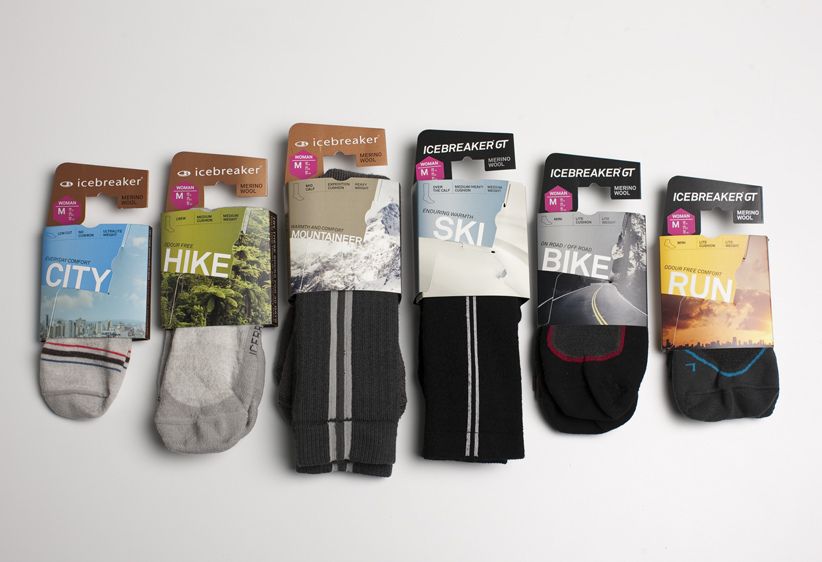
Sock sleeve packaging has become a popular choice for packaging socks in a way that is both functional and visually appealing. This type of packaging is designed to protect and showcase socks while also making them easy to display and store. Whether for retail environments or online sales, sock sleeve packaging combines practicality with style, ensuring that the product stands out to consumers and remains in excellent condition until it reaches its new owner.
What is Sock Sleeve Packaging?
Sock sleeve packaging refers to a type of packaging that wraps around a pair of socks. Unlike traditional boxes or bags, sock sleeves are typically made from lightweight materials and offer a slim, efficient way to package socks. Here’s a closer look at the features and benefits of sock sleeve packaging:
Design Features
Slim and Compact: Sock sleeves are designed to be slim and compact, taking up less space compared to bulky boxes or bags. This makes them ideal for efficient storage and display in retail settings.
Customizable Design: Manufacturers can print custom designs, logos, and information directly onto the sock sleeves. This allows for creative branding and ensures that the packaging aligns with the product’s visual identity.
Materials Used: Common materials for sock sleeves include paperboard, cardstock, and flexible plastics. These materials offer durability while being lightweight, which helps in reducing shipping costs.
Benefits for Retail and Consumers
Enhanced Visibility: Sock sleeves offer a clear view of the socks inside, allowing customers to see the design and colors before purchasing. This transparency helps in attracting attention and making informed buying decisions.
Easy Handling: The slim profile of sock sleeves makes them easy to handle and stack. Retailers can efficiently organize and display multiple pairs of socks without taking up excessive shelf space.
Cost-Effective: Sock sleeves are generally more cost-effective than other packaging options. They use less material and are often less expensive to produce, which can lead to savings for both manufacturers and retailers.
Environmental Considerations
Recyclability: Many sock sleeves are made from recyclable materials, making them a more environmentally friendly option compared to plastic bags or non-recyclable packaging. This supports sustainable practices in packaging.
Reduced Waste: The minimalistic design of sock sleeves means less material is used overall, contributing to reduced waste. This aligns with the growing consumer preference for eco-friendly and sustainable products.
Biodegradable Options: Some manufacturers offer biodegradable sock sleeves, which break down naturally over time. These options further reduce environmental impact and support greener packaging solutions.
Designing Your Sock Sleeve Packaging
Creating effective sock sleeve packaging involves several key considerations to ensure it meets both functional and aesthetic requirements. Here’s what you need to keep in mind:
Branding and Aesthetics
Visual Appeal: Invest in high-quality graphics and printing to make your sock sleeves visually appealing. Eye-catching designs, vibrant colors, and clear branding elements can significantly enhance consumer interest.
Brand Consistency: Ensure that the design of the sock sleeves aligns with your overall brand identity. Consistent use of colors, fonts, and logos helps reinforce brand recognition and creates a cohesive product presentation.
Informative Elements: Include important information such as sizing, care instructions, and material details on the sock sleeve. This helps consumers make informed choices and adds value to the packaging.
Functionality and Practicality
Secure Fit: Design the sock sleeves to securely hold the socks in place without damaging them. This prevents the socks from shifting or becoming wrinkled during transportation and handling.
Easy Opening: Incorporate features that allow for easy opening and resealing if needed. This adds convenience for consumers and helps in maintaining the quality of the socks.
Protection and Durability: Ensure that the materials used offer adequate protection from dust, dirt, and moisture. Durable packaging helps keep the socks in pristine condition until they are purchased and used.
Production and Cost Factors
Material Costs: Choose materials that balance cost and quality. While it’s important to select durable and attractive materials, keeping an eye on production costs helps maintain profitability.
Print Quality: Invest in high-quality printing to ensure that designs are sharp and colors are vibrant. Quality printing reflects positively on the product and brand, enhancing overall appeal.
Production Volume: Consider the scale of production when designing sock sleeves. Larger production runs can often reduce per-unit costs, but make sure to account for storage and inventory management.
Best Practices for Sock Sleeve Packaging
Test and Review: Before finalizing the design, conduct tests to ensure that the sock sleeves perform well in real-world conditions. Review the packaging for any issues with durability or functionality.
Consumer Feedback: Gather feedback from customers regarding the sock sleeve packaging. Their input can provide valuable insights into how the packaging is received and any areas for improvement.
Stay Current: Keep up with trends in packaging design and consumer preferences. Staying updated on industry trends ensures that your sock sleeves remain relevant and competitive in the market.
Conclusion
Sock sleeve packaging offers a practical and visually appealing solution for presenting and protecting socks. Its slim profile, customizable design, and cost-effectiveness make it a popular choice for retailers and manufacturers alike. By focusing on branding, functionality, and environmental considerations, businesses can create sock sleeve packaging that enhances the consumer experience while aligning with sustainable practices. As the market continues to evolve, sock sleeve packaging remains a key player in the world of product presentation and retail.